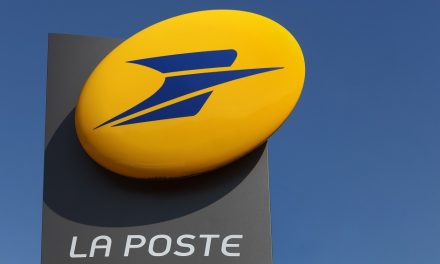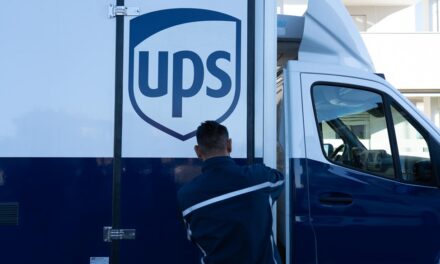
SMEs optimistic on intra-Asia trade
US economic woes are rattling Asian SMEs (small and medium-sized enterprices) and caution is the watchword amid chal-lenging times, according to a United Parcel Ser-vice (UPS) survey. Only 39 percent of the 1,200 respondents see growth in trade with the US this year, compared with 51 percent last year. But the majority of the SMEs (71 percent) are confident that intra-Asia trade will remain robust despite the economic woes in other regions.
The confidence in intra-Asia trade is a blessing in disguise for UPS as such enterprises provide the bulk of the freight forwarder’s business in Asia. Joseph Guerrisi, UPS vice-president of marketing for Asia-Pacific, said: “UPS is achieving better than the eight percent global growth it has forecast for freight business in Asia.”
However, surcharges that UPS imposes to help defray its surging fuel costs appear to be damping demand somewhat, and more customers are seeking cheaper shipment options, Woodward said.
A recent silver lining for UPS in Asia has been a higher-than-expected demand for its recent Anchorage-Nagoya-Shanghai service. Another positive development is that demand on some routes in Asia has been strong enough to justify a switch to larger aircraft, Woodward said.
Despite the general Asian bearish outlook, there are pockets of optimism among the Asian SMEs, according to the UPS Asia Business Montor. For example, in India some 87 percent of SMEs are upbeat about business growth prospects, which is most likely because of the country’s less dependence on US trade.
In general, Asian SME0 confidence in growth prospects for 2008 has slipped compared to the robust expectations last year, in light of the US economic slowdown, the survey shows.
Optimism has slipped across the region from 57 percent in 2007 to 52 percent in 2008 and a sentiment of caution pervades among SMEs. Half of the companies surveyed feel they will not perform quite as well as they did in 2007. China has slipped from second to fifth position in business prospects for 2008, surpassed by the Philippines, Indonesia and Malaysia while Japan SME’s confidence has dropped by 10 percent. US economic woes are rattling Asian SMEs (small and medium-sized enterprices) and caution is the watchword amid chal-lenging times, according to a United Parcel Ser-vice (UPS) survey. Only 39 percent of the 1,200 respondents see growth in trade with the US this year, compared with 51 percent last year. But the majority of the SMEs (71 percent) are confident that intra-Asia trade will remain robust despite the economic woes in other regions.
The confidence in intra-Asia trade is a blessing in disguise for UPS as such enterprises provide the bulk of the freight forwarder's business in Asia. Joseph Guerrisi, UPS vice-president of marketing for Asia-Pacific, said: "UPS is achieving better than the eight percent global growth it has forecast for freight business in Asia.''
Derek Woodward, UPS president for Asia Pacific said: "Our intra-Asia and Asia-Europe volumes are growing at a very healthy rate.'' He noted that UPS invested in the long term back in the 90s. "We made some very strategic investments in Europe and are now well-positioned.''
However, surcharges that UPS imposes to help defray its surging fuel costs appear to be damping demand somewhat, and more customers are seeking cheaper shipment options, Woodward said.
A recent silver lining for UPS in Asia has been a higher-than-expected demand for its recent Anchorage-Nagoya-Shanghai service. Another positive development is that demand on some routes in Asia has been strong enough to justify a switch to larger aircraft, Woodward said.
K K leung, UPS managing director, Hong Kong-Macau, said UPS has decided to increase flights from Hong Kong to its European air hub in Cologne from once to twice daily after it moves its intra-Asia hub from Clark in the Philippines to Shenzhen. UPS will take delivery of five to six Boeing 747-400 freighters by the end of the year to replace its McDonnell Douglas MD-11s.
The aircraft would boost UPS' three daily flights to the US by 30 to 40 per cent. By contrast, some carriers, including Northwest Airlines and Korean Air, have been cutting back long-haul routes due to the surging increase in fuel costs.
Despite the general Asian bearish outlook, there are pockets of optimism among the Asian SMEs, according to the UPS Asia Business Montor. For example, in India some 87 percent of SMEs are upbeat about business growth prospects, which is most likely because of the country's less dependence on US trade.
In general, Asian SME0 confidence in growth prospects for 2008 has slipped compared to the robust expectations last year, in light of the US economic slowdown, the survey shows.
Optimism has slipped across the region from 57 percent in 2007 to 52 percent in 2008 and a sentiment of caution pervades among SMEs. Half of the companies surveyed feel they will not perform quite as well as they did in 2007. China has slipped from second to fifth position in business prospects for 2008, surpassed by the Philippines, Indonesia and Malaysia while Japan SME's confidence has dropped by 10 percent.
Caution and challenge are the two key aspects that SMEs are concentrating on this year, said Guerrisi. There has been a critical shift in business concerns. In 2007, SMEs were more concerned with the quality of products and services but this year there are more worried about retention of quality staff, which is keeping most SME managements awake at night. This is particularly pressing in Australia (66 percent), China (64 percent) and Japan (60 percent).
Political and economic stability is a key concern in markets such as Taiwan, Indonesia and the Philippines. More than half of the SMEs polled said they are still experiencing difficulties financing their businesses. In places such as the Philippines, China Malaysia, India and Thailand, the difficulties in getting funds was blamed on buereucracy and red tape.
Leung said: "To deal with the US slowdown, Hong Kong should look for market potential beyond the US and further integrate with China."
Signs that confidence is eroding was reflected in Hong Kong SMEs forecasts for economic and business prospects, which have dropped by one percent and five percent, respectively. The majority of respondents (58 percent) indicated they were likely to freeze hiring, and 33 percent expected to increase their workforce.
With heavy reliance on trade with North Am-erica, the majority of Hong Kong SMEs (57 percent) feel the struggling US economy will hurt their businesses. Hong Kong SMEs also expressed uncertainty about their business with China, with 40 percent of the respondents regarding China as both a threat and boost to their business.
Hong Kong SMEs have also slipped in competitiveness against their counterparts in the region, the UPS findings show. South Korea has overtaken Hong Kong in competitiveness this year. Hong Kong has slipped from third to fourth position, on a par with Singapore. Only 52 percent of the respondents consider SMEs in Hong Kong to be competitive, a decrease of nine percentage points compared to 2007.
"Hong Kong SMEs feel they are on slippery ground and are losing confidence in economic and business prospects amid uncertainties in the macro environment,'' Leung said.
SMEs in China continue to be regarded as the most competitive in the region, although this lead has dropped from 71 percent in 2007 to 62 percent in 2008. The UPS survey shows that most Hong Kong SMEs want the government to play a bigger role in helping them stay competitive. Leung said that while Hong Kong SMEs were resilient, they recognised the government could better support them in the increasingly challenging operational environment.
To stem the slide in competitiveness, Leung suggested Hong Kong SMEs take a closer look at the actions taken by their South Korean counterparts. South Korea has the highest number of SMEs (69 percent) who believe they are very effective in managing their supply chains.
By contrast, the majority of SMEs in Hong Kong said they were still experimenting with ways to manage their supply chains (30 percent) or under-utilising the power of the supply chain (31 percent).












